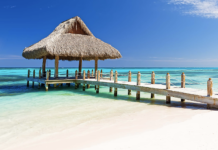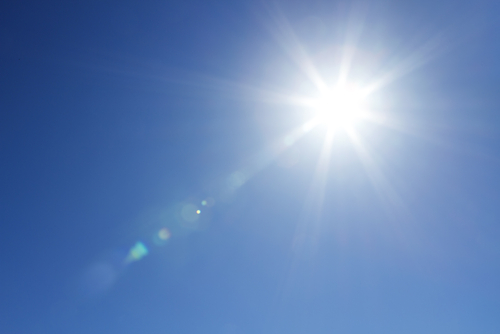Brimming with fascinating culture, colourful food markets, bustling tapas bars and beautiful beach spots, Barcelona is a perfect place for a weekend getaway. Francesca Washtell rounds up this wonderful city in a nutshell
Chimneys on the roof of Casa Mila designed by Antoni Gaudi on the Passeig de Gracia, Barcelona, Spain
© Rick Ligthelm
Despite Spain being one of the hardest hit Eurozone economies in recent years and the state of Catalonia’s increasing nudges to independence, the country’s cultural capital is as thriving and cosmopolitan as ever, and ready to receive visitors all year round.
It would be easy to spend a week in Barcelona and barely exhaust its cultural and historical marvels, visit all of its outdoor green and beach spaces and get lost in its labyrinth of gothic back streets.
But the city, also known as Ciutat Comtal (City of Counts) and the largest metropolis on the Mediterranean, is the perfect destination for a 48-hour getaway that can adapt to any budget and any type of activity. A short trip can easily be tailored for art-lovers, nightlife enthusiasts, beach-break seekers and foodies alike.
When to go
Barcelona enjoys a warm Mediterranean climate that makes it inviting for visitors at any time of year, though it peaks in the summer months (May to early September) with the highest average temperature of 24°C in August. October is the wettest month of the year, but current average daily temperatures are set comfortably in the mid-20s with clear skies forecast.
What to do
Although it is crammed with modernist art and architecture, historical sites, football stadiums and manages to fit sixty-eight parks within its borders, Barcelona has remained fairly compact.
Art and architecture fans should head for Gaudi’s masterpieces such as the stunning and unfinished La Sagrada Familia, Casa Batllo and La Pedrera, and should leave ample time to wander through Park Guell before visiting the world-class Picasso Museum and the Barcelona Museum of Contemporary Art.
Visitors should also make sure to include the Arc de Triomf, Port Olimpic and Placa d’Espanya in their sightseeing, and can take the cable car up Montjuic mountain to enjoy panoramic views of the city. Seasoned travellers with some good walking shoes can tackle Montjuic on foot, with the relaxing botanic garden to wander around in as a reward once reaching the top.
An afternoon can easily be whiled away getting lost in the Gothic quarter with its maze of boutiques and cafes, all an excellent antidote to some of the bigger sites (although take note that many of the smaller shops may be closed on Sundays).
Shoppers at all price ranges can enjoy malls such as Diagonal Mar, which has more than 150 stores and Maremagnum in the port area, which is the only mall to be open 365 days a year (all of the smaller malls will be closed on Sundays), and luxury shopping is well-served by the glamour and couture of the Passieg de Gracia.
A two-day ticket on the hop-on hop-off bus service is best for those who would rather skip the Metro. This service runs three routes through the city: the Blue line covers the Picasso Museum, the Olympic Village, FC Barcelona Stadium and Park Guell, the Green line covers the cities beach and shopping areas while the Red line weaves through the famous works of Antoni Gaudi such as La Sagrada Damilia, La Pedrera, Casa Batllo, etc.
Beaches
Barceloneta beach, around a 20-minute walk from the end of La Rambla, is the main tourist beach in Barcelona. But take a train south from Sants station for 30 minutes and you’ll reach Sitges beach where locals head to which is generally less busy with nicer sand and a range of bars and restaurants if you want to have a beach day and stay well into the evening.
Where to dine
Getting the most out of your evenings is the best way to maximise a 48-hour stay in any city, and Barcelona certainly doesn’t scrimp on quality food and evening entertainment.
The Gothic quarter has some of the finest Catalan cuisine in the city for those who prefer to stumble on small restaurants. Cerverceria Catalana on Carrer de Malorca will offer a delicious Catalonian meal before you venture out for Flamenco or on to a bar. Alternatively, some of the best Flamenco spots in town such as Tarantos, located in La Rambla’s Placa Reial, Tablao Cordobes and Tablao Carmen will integrate Flamenco alongside dinner, although you can usually choose between a dinner and show and show-only option. Tickets for Flamenco performances in the city range from €10 to €150.
For nightlife, classic club venues by the beach such as CDLC still provide a good night out but many are turning to quirkier bars or other venues favoured by locals such as Barcelona’s ‘super club’ Razzmatazz (a hotspot for guest DJs in its five-room warehouse) and Apolo Bar.
Where to stay
Barcelona can easily accommodate any price range and any level of luxury. Many hotels have rooftop pools or access to beaches, although for a short trip more accommodation in the middle of town might be a better launch-pad for soaking up the city. For travellers on a budget, Chic&Basic Born hotel is centrally located near the old city and good value for money at around €66 a night for a small double room, while the mid-range Hotel Villa Emilia has rooms starting at €115 and is close to La Rambla and Paseo de Gracia. Close by, the luxurious 987 Hotel is also a stone’s throw from Gaudi’s La Predrera and Casa Battlo.




















